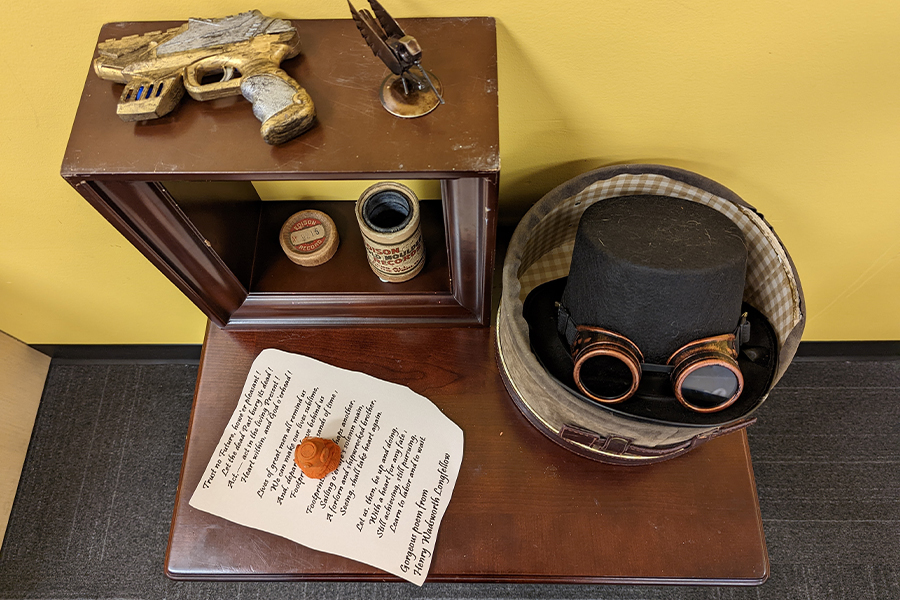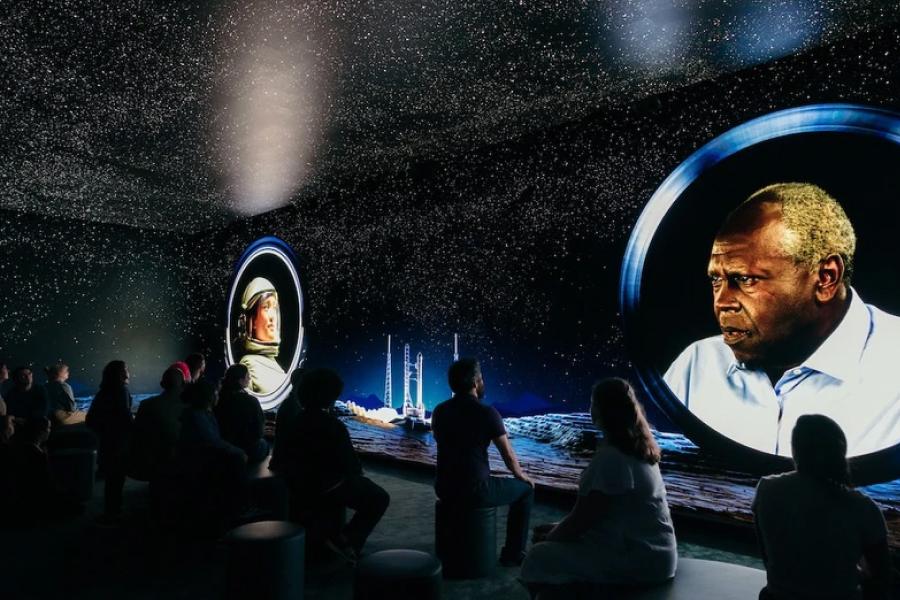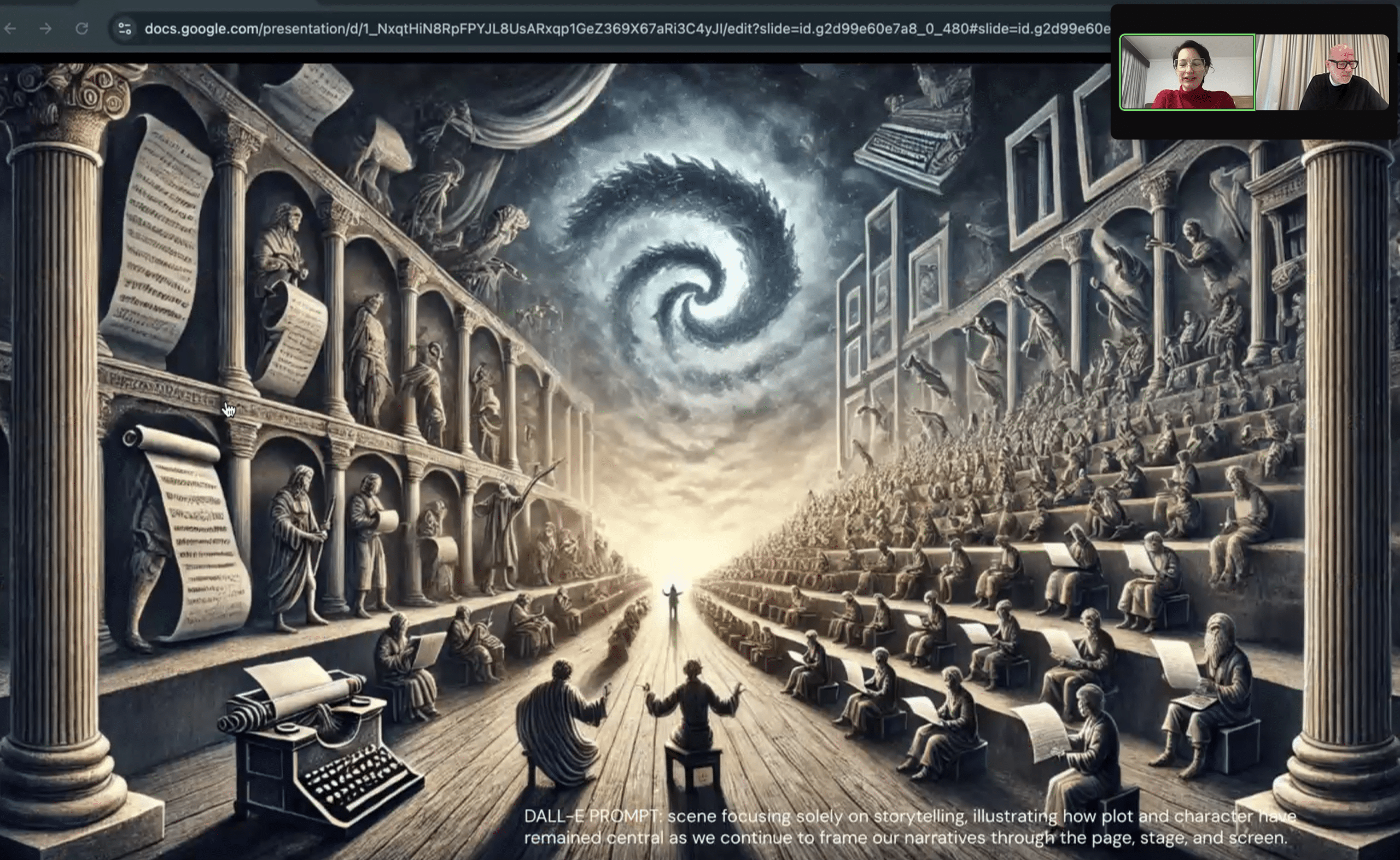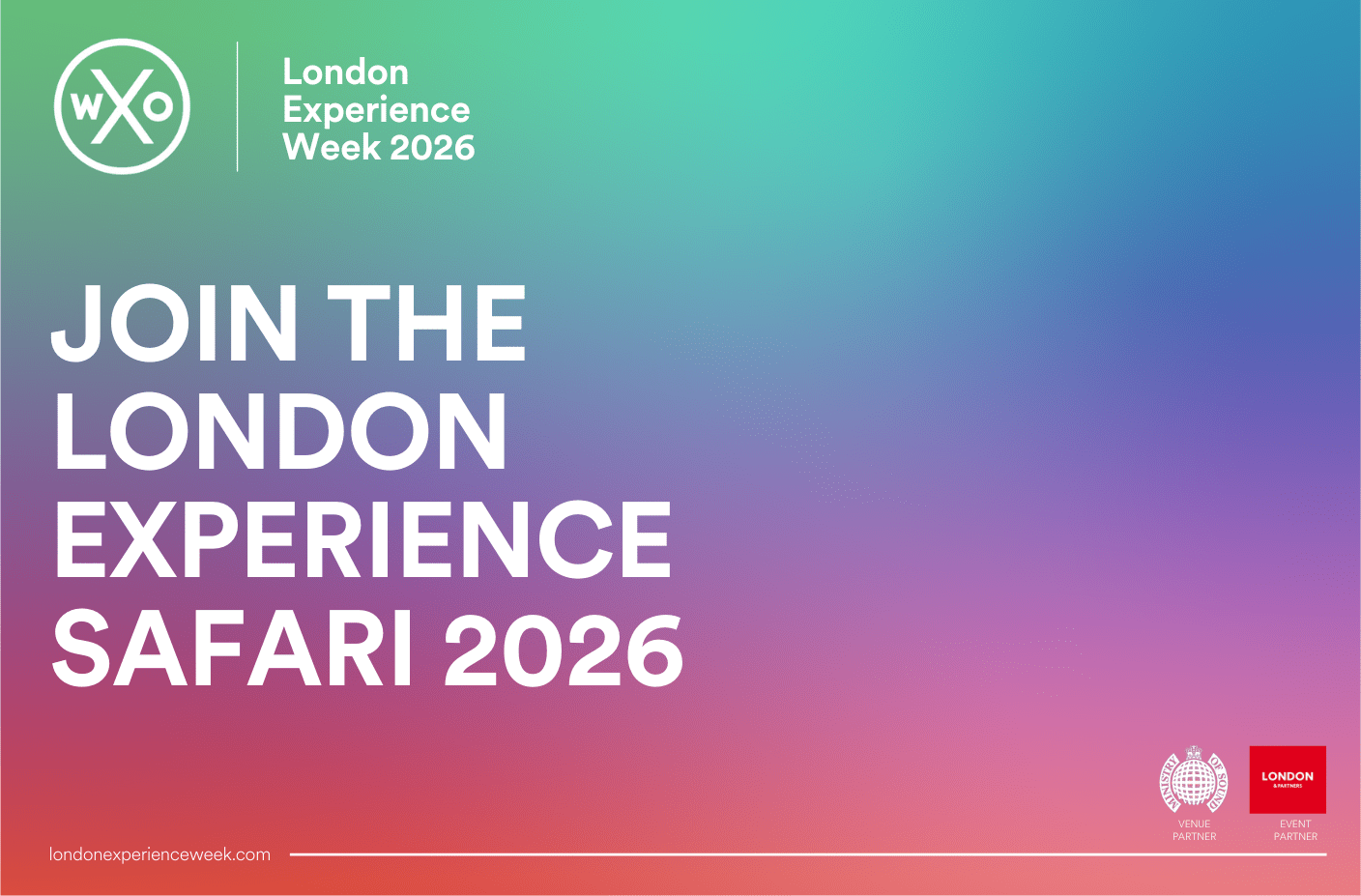WXO Case Studies tell the story of how experts across the Experience Economy have faced challenges, solved problems, and either pioneered new ideas or just figured out how to make something work really well.
We believe these experience-based ideas are highly transferable, and that you should be able to take what they discovered in their sector, and apply it in your area of the Experience Economy. If you’d like to share your own case study with the WXO community, please get in touch.
Dr. Overton’s STEAMpunk Escapade was an immersive, narrative puzzle adventure in which participants took place in an “untimed escape room” scenario set in a fantasy world of steampunk.
Though it was technically framed as a themed attraction mixed with an escape room, this experience was meant to double as an educational tool for teaching STEAM (Science, Technology, Engineering, Art, and Math) to college students in a subtle, “Edutaining” way.
Austin Baker, an associate of the Experience Design department at the University of Indianapolis, tells us more.
Who’s our Hero?
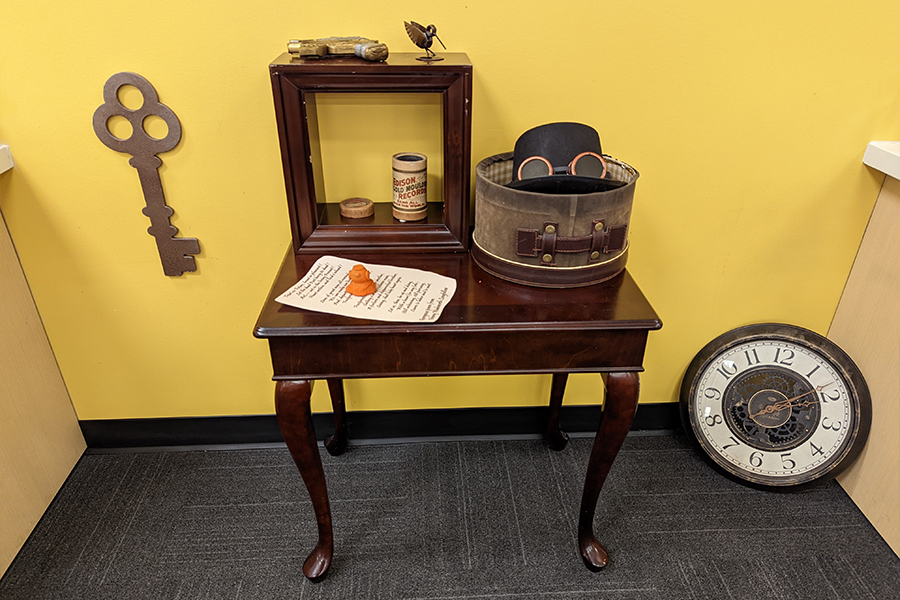
We believe stories Start With Who – so who’s the hero of this one?
This experience was designed through a co-creative partnership between four different parties that represented three different University of Indianapolis institutions:
- Dr. Samantha Meigs (Department of Experience Design)
- Mary Gobbett (Department of Biology)
- Austin C. Baker (Department of Experience Design)
- Marisa Albrecht (Krannert Memorial Library)
The idea for this project evolved out of a conversation Dr. Meigs, Mary, and I had back in May in which we were discussing the lack of “play spaces” of an educational nature on our campus. Eventually we developed our ideas a bit further and took them to the Associate Dean of our school, who helped us secure a room in our campus’ library that would act as a place where we could prototype our creative ideas.
Bill Nye the Science Guy was going to be speaking on campus in September, so we decided that our first installation (to be opened the same week he was on campus) should incorporate STEAM education into its design. One thing led to another, and we came up with the concept of a Steampunk-based “STEAM” experience.
What was the Old World like?
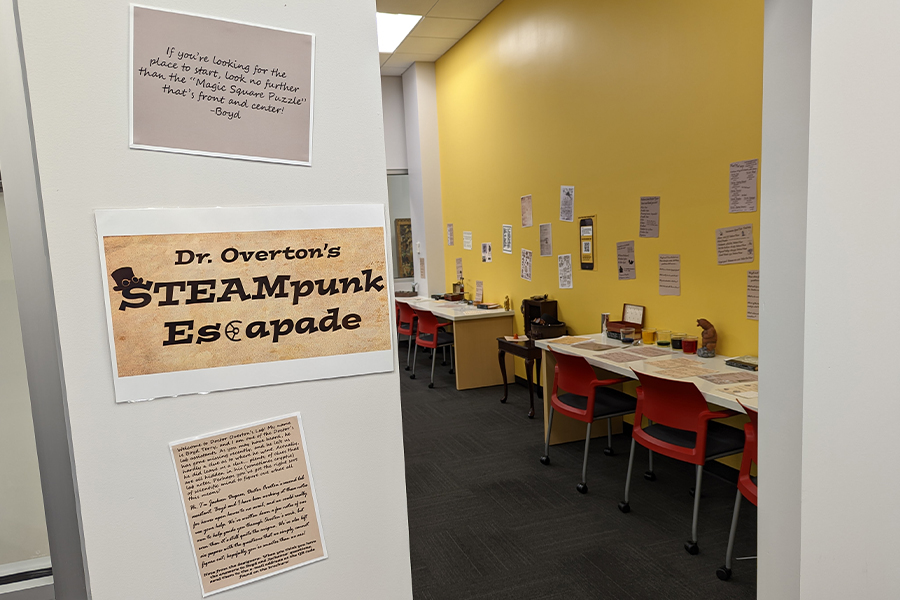
How were things going?
One of the biggest frustrations during the design of this experience was the fact we started with no space at all! When the idea first began to germinate in our heads, neither the Experience Design Department nor the Biology Department had a space that was equipped to handle a semi-permanent installation like we had been talking about. To make matters worse, we are a small campus and space is seen as a hot commodity.
During initial meetings with campus facilities and with the Associate Dean, it was starting to look like there was no place for such an installation. Thankfully, a space in our library was secured, and we were given permission to proceed with our design. Another small frustration was trying to fit the theme to the content and applications we were attempting to teach; the Steampunk genre is one that is tightly wrapped up in fantasy elements, and there was some debate as to whether or not it was the best genre to go with to teach real scientific theories.
What was the Call to Adventure?
What was the problem, either “out there” – in society, the industry, the world – or “in here” – the firm, the community?
To start, I’ll throw out a nationwide, lofty problem that all of our designers agreed was an issue at the beginning of this project: education is seen as boring and not something that is done outside the classroom. Though all three of us have previous experience designing exhibits and educational outreach activities, we quickly realized that the traditional way of education was not going to work for this design.
Students who responded to our calls for feedback (informally) all said similar things: they would not take time out of their busy schedules to consciously come to the library and learn outside of learning associated with coursework. If we wanted to make this space work, we had to come up with something that was so well-designed that our audience wouldn’t even realize they were learning, and which also had enough appeal to get students back on campus.
Who was your Mentor?
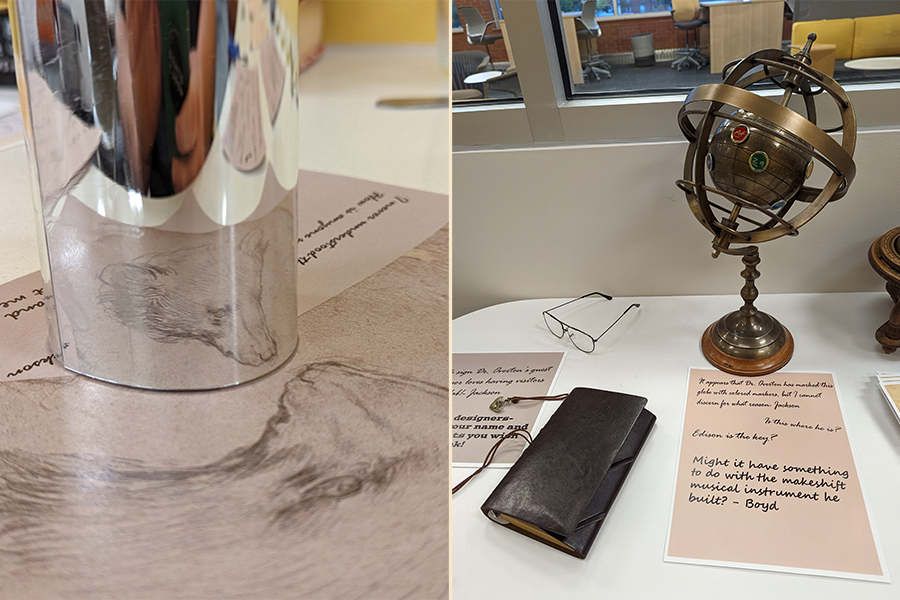
Did the people going on this journey have a mentor – either a real person or a way of thinking?
In this scenario, Dr. Travis Miller acted as our “mentor.” Dr. Miller is the Senior Associate Dean of the Shaheen College of Arts and Sciences, and without him we wouldn’t have been able to secure the space for this experience in the first place.
Dr. Miller is the one who did most of the corresponding with our university’s Facilities, and he also the one who negotiated to get the space modified to better fit our needs. Dr. Miller believed in this project from the very beginning, and without his guidance and assistance it simply wouldn’t have become a reality!
Why did you at first Refuse the Call?
Why didn’t you action this before?
There were two main reasons this had never been done before-
- We had no precedent for any sort of semi-permanent, immersive spaces being present on campus.
- This was a huge time commitment, as well as a huge risk; all three members of our design team were maxed out on their teaching load and involved in a handful of other extracurricular activities that ate up a large chunk of our spare time.
What was the Inciting Incident?
What changed?
Believe it or not, the return of Bill Nye the Science Guy! He was originally scheduled to speak on campus in the Fall of 2020, and the three of us started to develop ideas on an experience we could do that would correspond with his visit. Unfortunately Bill Nye’s program was ultimately cancelled due to the nationwide COVID-19 shutdowns, though in the early days of 2022 it was announced that the long-postponed event was back on track and was going to be taking place the following semester. Mary, Dr. Meigs, and I all picked up from where we had left off two years prior, and the end result was Dr. Overton’s STEAMpunk Escapade.
What would have happened if you hadn’t Crossed the Threshold?
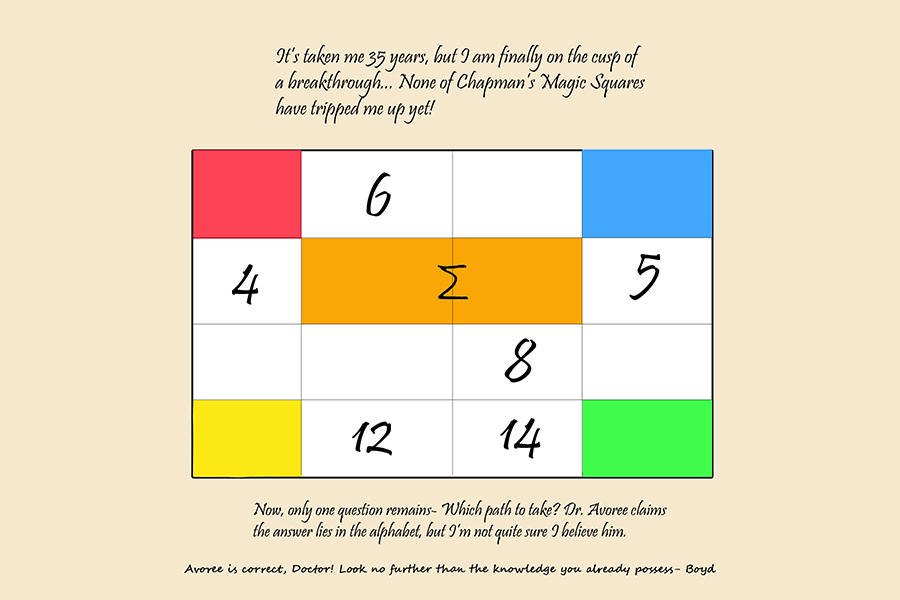
…or done what you’d always done before?
Under normal circumstances, we would have simply designed a pop-up experience to coincide with Bill Nye’s visit. Though this may have given us a good event, it would have only been a one-time experience that wouldn’t be replicated ever again. Likewise, we would never have secured the semi-permanent space we now utilize had we just designed something that was meant to exist for a mere handful of hours.
What Trials did you face?
Lack of knowledge? Time? Money? Contacts?
Even after the initial idea was put in motion and the space was secured, the design team encountered several bumps in the road along the way.
The first big issue was the fact the room was not lockable; this meant that we couldn’t put anything into the space that was valuable, as we couldn’t keep an eye on it 24/7. Obviously this led to a few design challenges in terms of the puzzles and props that were used in the final experience.
Another issue we faced was a dispute amongst the three of us. One of us wanted to focus more on the learning content of the experience, while another wanted to focus heavily on the narrative, and the other wished to take a deep dive into the design of the props and puzzles. Though we eventually settled this debate, it dominated many of our discussions during the Ideation and Prototyping phases of the Design Thinking Cycle.
The third (and probably most challenging) issue was the lack of props for the experience. Though all three of us had dabbled in the world of Steampunk at various levels, we had only a handful of props ready to go that could be used for this experience. This meant anything we wanted to incorporate had to be designed from the ground up.
Who were your Enemies?
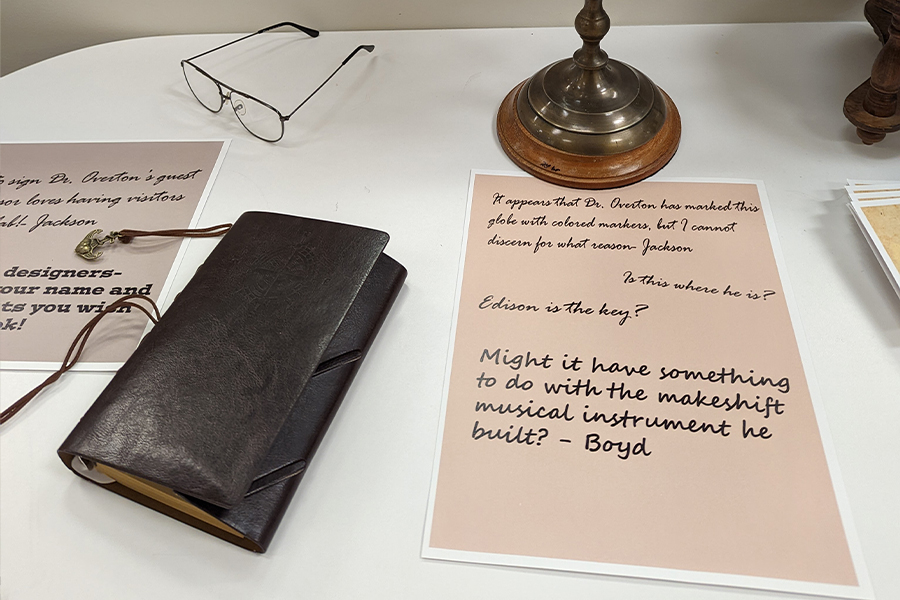
My biggest “enemy” in this project was most certainly imposter syndrome. I can only speak for myself on this front, but I was constantly battling against the nagging voice in my head saying things like “You’re not a specialist in math or engineering, so you can’t design puzzles based on math and engineering” or “You don’t have the physical skillset to make these props look professional.” Thankfully, neither of these enemies prevailed in the end!
Who were your Allies?
As stated in the beginning, Dr. Meigs and Professor Gobbet were my biggest allies in this project, as it was co-created by all three of us. Outside of our design team, Marisa Albrecht (Director of Krannert Memorial Library) was always willing to work with us in terms of our needs for the space and prototyping our designs, and Dr. Travis K. Miller was instrumental in securing the resources we needed from the University to make this vision a reality.
What Tools helped you on this journey?
What’s the closest thing you had to King Arthur’s Sword, or Luke Skywalker’s lightsaber?
There were two tools that helped me immensely on this journey: Adobe Photoshop Elements, and a simple paintbrush. I got more than my money’s worth out of the software I’d bought eight years ago, as it was the key to creating all of the paper props that were used to drive the narrative of the experience and act as the puzzles to the “escape room.”
The other tool I used extensively during the design process was a simple set of paintbrushes that I’d picked up from a hobby store. With these brushes I was able to completely transform everyday objects and props purchased from the thrift store into aesthetically-pleasing Steampunk items that not only looked professional, but that also looked REAL.
What was your biggest Ordeal?
What was the toughest challenge you faced?
Far and away the toughest challenge of this project was the integration of STEAM concepts into the story. Though we had a coherent story that played out in a non-linear way throughout the space, we could not forget the educational part of this “edutainment” experience.
It was a struggle to find scientific, mathematical, and engineering concepts that were scientifically accurate today that would have also plausibly existed in the Victorian Era (where most Steampunk literature takes place). I spent several hours reading up on the history of STEAM in general, and even more time teaching myself the basic formulas and concepts of various STEAM fields so that they could be utilized in the puzzles we were creating.
Did you have any ‘Aha!’ moments?
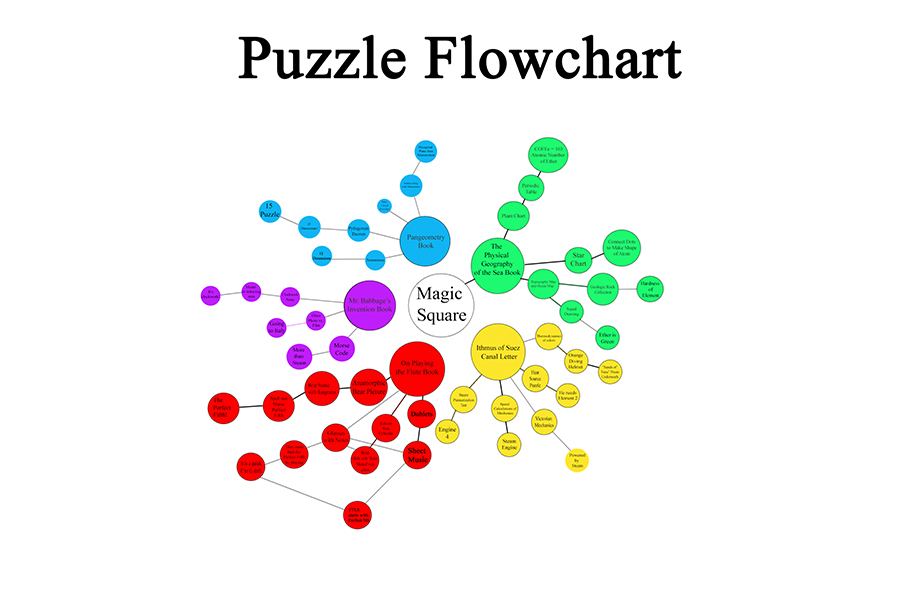
Moments of discovery and inspiration… times when instead of the fog of uncertainty, you suddenly saw the way forward?
The biggest “aha” moment came when I finally sat down and started to map out the flow of the puzzles. From the beginning we had decided Dr. Overton’s STEAMpunk Escapade wasn’t going to be a linear experience; we wanted the story to unfold alongside the guests’ chosen interests, which meant the experience could play out in literally hundreds of different ways. At first this was extremely intimidating, as I didn’t know where to even start.
However, after much discussion the design team decided to create five different “paths” that the participant could take. Each one was based on one of the five different components of the STEAM acronym, and all corresponding puzzles and narratives would fit with that theme. When I finally sat down at my computer and started to create a visual map of each puzzle branch, it hit me that this actually may just be a viable design. From there I laid out the pathways, which in turn gave me a makeshift “to-do list” that would help keep me on track for the rest of the design process.
What was the Reward?
What were the results of all your hard work?
In terms of outputs, this experience looked very well-put together and featured a story that flowed quite well and had a bit of depth, as well as educated the audience in a fun, gamified way.
Though we have struggled to keep an accurate account of attendance numbers, we’ve had several people come through the space and take a crack at the adventure (though to varying levels of engagement and success).
As for the outcomes? Not to get too sappy here, but designing Dr. Overton’s STEAMpunk Escapade felt like it was a turning point for me as a designer. I was the one in charge of actually creating the props for the experience, and when I saw them sitting in the room, assembled, I couldn’t help but feel a sense of pride, and all of my impostor syndrome seemed to vanish in a flash.
After years of simply teaching how to design an experience and letting students be responsible for most of the design choices, we had put our money where our mouth was. The result was something that I am still proud of to this day, that allowed me to flex my strengths as a designer while also discovering skills I didn’t know I even had.
How does the New World look now?
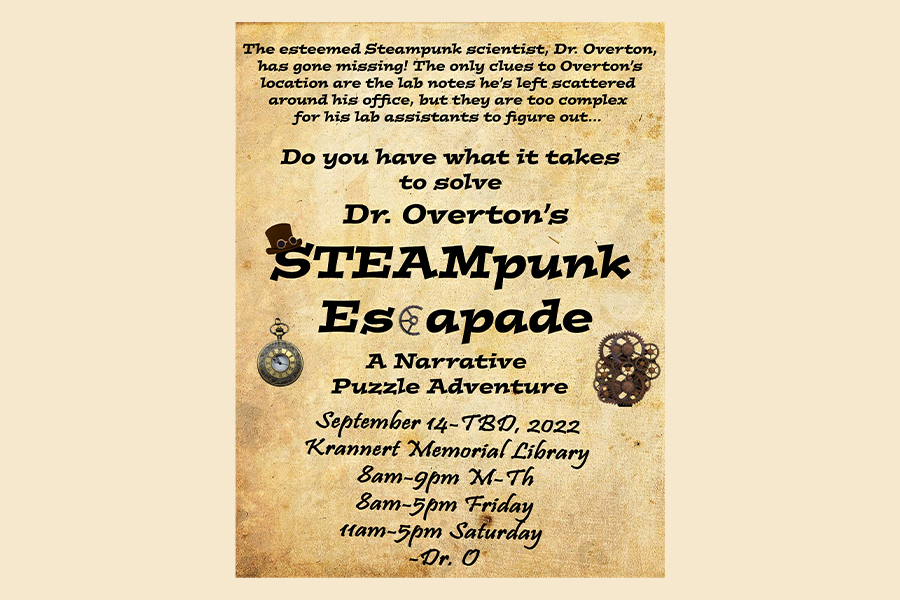
Now you’ve faced this challenge, what does it mean for you, your organization, and the world?
Though attendance hasn’t been as great as we’d hoped for Dr. Overton’s STEAMpunk Escapade, we have all learned a great deal from this first installation. We are currently in the process of branding the space itself and plan to create revolving installations and programming inside that all fit under the theme of “puzzle-based edutainment.”
Most importantly, students at the University of Indianapolis now have a space that’s meant purely for edutainment experiences, which will (hopefully) stimulate their curiosity and re-ignite their passion for learning. Though it may not sound like a big deal to most, the establishment of this sort of space is something that our department has been discussing for almost a decade now, and words cannot describe how happy I am to finally see it come to fruition.
What might the next Journey be?
Thinking ahead, what might the challenges ahead look like?
The next challenge is already in the making….
Along with the overall branding of the space, we are currently developing the second immersive edutainment experience that will be set up in the space.
Long-term, we are trying to figure out how to make the space a bonafide “playspace” for college students that will not only feature a revolving theme and narrative, but which will also allow them the opportunity to engage in activities that stimulate serious play, tinkering, and critical thinking.
For more case studies and learning frameworks from the Experience Economy, check our Case Studies page here.

